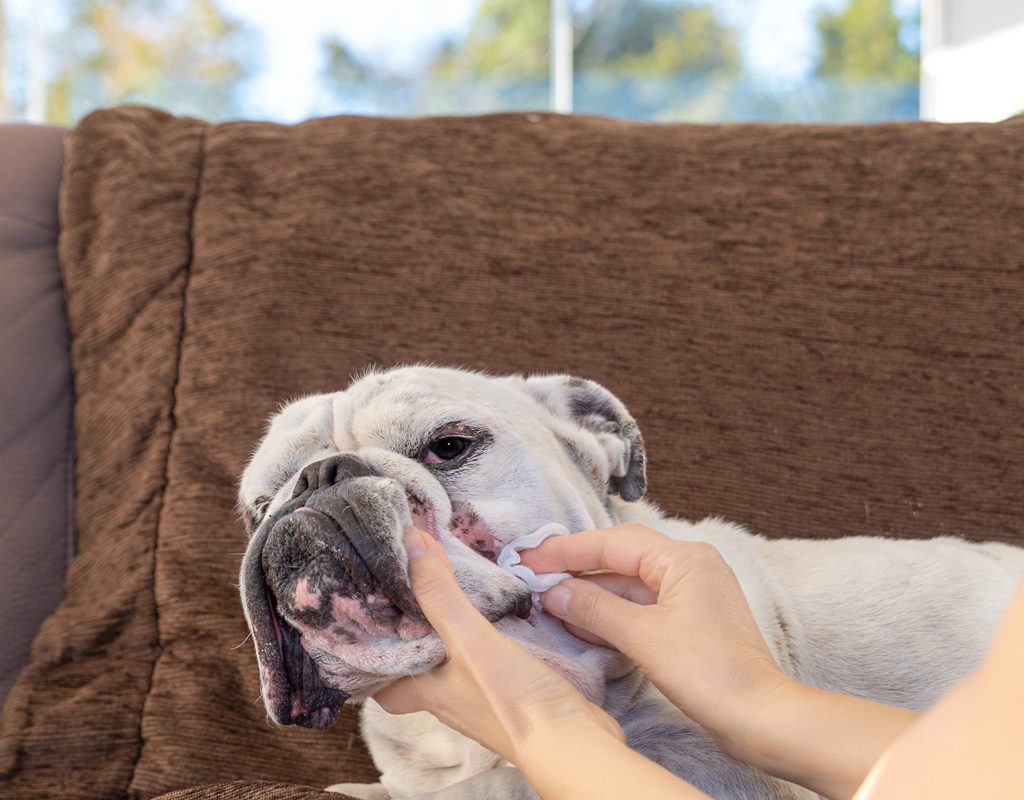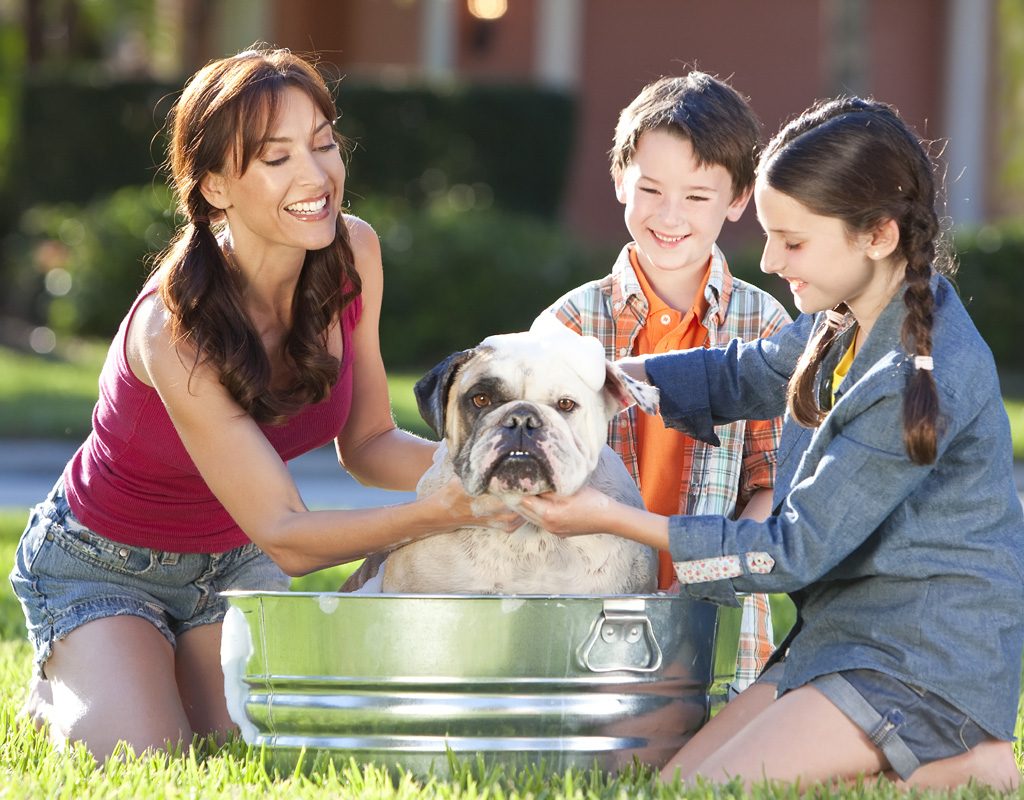We dare you to look into a bulldog’s face and not smile. It’s really impossible. It’s that wonderful combination of underbite and wrinkles, along with the playful, outgoing personality that makes enthusiasts fall head over heels in love with this breed. However, those endearing wrinkles also mean extra maintenance. Experts at the Bulldog Club of America (BCA) say grooming is essential to keep your dog healthy and free of parasites and odors.
Those adorable wrinkles need daily attention
The wrinkles on a bulldog’s face are prone to skin problems from a combination of chafing, heat, and moisture. The folds also trap food and dirt. If the wrinkles aren’t cleaned regularly, this buildup not only causes your dog to smell, but it can also lead to skin infections, hot spots, and a condition called skin fold pyoderma — an inflammatory skin disorder that develops in skin folds. Veterinary experts say it’s easier to use preventive care by practicing good grooming habits than to put your bulldog through medical treatment for skin conditions, which can be costly, painful, and time-consuming.

How to clean your bulldog’s face
Your bulldog’s face needs to be cleaned at least once a day and maybe more often if your dog is a sloppy eater or slurps his water. In that case, you will want to clean his face again after he eats or drinks. If you start this daily routine when your dog is a puppy, it will become second nature to him. Here are some face-cleaning tips:
- A cotton ball dipped in peroxide works well to clean the skin folds, according to BCA experts. Alternately, you can use a warm washcloth and a germicidal soap recommended by your veterinarian. Some pet parents prefer to use baby wipes with lanolin and aloe vera to clean the wrinkles. You also can purchase commercial products made especially for the job. For example, Wrinkle Wipes and Bully Wipes are two natural products that received 4.5-star ratings on Amazon.
- To clean his face, work your way in and around the wrinkles, removing all the dirt and grease trapped in the skin folds.
- Be sure to dry the folds thoroughly with a soft, dry cloth after cleaning. For additional protection against moisture, you can sprinkle cornstarch or baby powder into the skin folds.
- Don’t forget to wash your bulldog’s nose and apply petroleum jelly to keep it soft and prevent drying and flaking.
Be alert for any skin problems
If you notice the skin looks irritated when cleaning your dog’s wrinkles, you can ask your veterinarian to recommend a soothing ointment. Also, be on the lookout for any signs of an infection. Symptoms include:
- Moisture in the wrinkles
- A foul odor
- Redness of the skin or discharge from the folds
It’s important to take your dog to the veterinarian if you suspect a skin infection. Your vet may prescribe topical steroids or oral or topical antibiotics to treat the condition.
Cleaning the tail pocket
Not all bulldogs have tail pockets, and it can be difficult to tell if your dog does until he grows out of puppyhood. The pocket created by a fold of wrinkly skin is typically an indentation found under the dog’s tail. When in doubt, ask your professional groomer or veterinarian. Just like face wrinkles, tail pockets can trap dirt and moisture and become infected, so you should include them in the daily cleaning routine. You can use a damp cloth or baby wipe to gently clean the tail pocket, and be sure to dry thoroughly after cleaning.
Maintain a weekly grooming schedule
While a bulldog’s wrinkles require daily attention, grooming experts at the American Kennel Club recommend weekly upkeep sessions to keep the coat clean and odor-free. Starting with a currycomb or mitt, use circular motions to remove all the dead skin, loose hair, and dried-on slobber and dirt from your dog’s coat. You can finish the grooming session by running a soft bristle brush through his coat, working from the head to the tail.

Bathing your bulldog
Some pet parents bathe their bulldogs every week, others once a month, and some even less than that. If you maintain a regular grooming routine and your bulldog doesn’t seem dirty or smelly, you can bathe him less often. When bath time does come around, grooming experts recommend putting a rubber mat in the tub to prevent your dog from slipping. Also, place cotton balls in your bulldog’s ears to keep the moisture out. When bathing:
- Use a small amount of shampoo in your hand to wash your dog’s body. Rinse twice after washing to be sure all the shampoo is removed.
- You can use a small sponge or washcloth to clean around his eyes.
- Moisten a cotton ball or washcloth with mineral oil and gently wipe the inside of the ears.
- After bathing, hand-dry your dog with fresh towels. You can use cotton balls to dry the little pockets of skin around the face and tail that can trap moisture.
Don’t forget that brushing your dog’s teeth and clipping his nails are all part of a good grooming routine. Yes, bulldogs are high maintenance, but it’s totally worth the effort to share your life with a happy, healthy, fun-loving dog.



